
French postcard by Edition du Globe (EDUG), Paris, no. 163. Photo: Studio Harcourt.

French postcard by Collection Chantal, Paris, no. 637. Photo: Discina, Paris.

French postcard, no. 13. Photo: Studio Harcourt.
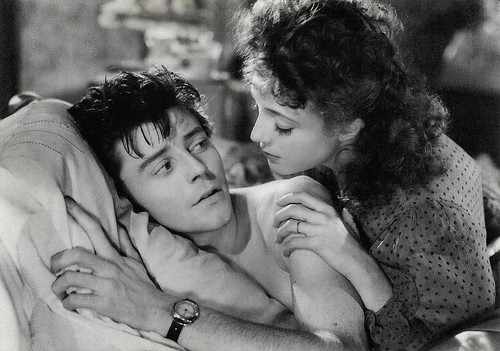
French postcard by Editions La Malibran, Paris, no. CF 23, 1990. Gérard Philipe and Micheline Presle in Le Diable au corps/Devil in the Flesh (Claude Autant-Lara, 1947).

French postcard by Editions P.I., Paris, no. S-1147. Photo: Paramount. Micheline Presle and François Périer in Bobosse (Etienne Périer, 1959).

French postcard by Editions d'art Yvon, Paris, no. 40-110-07. Photo: Parc Film / KIM. Micheline Presle and Jacques Perrin in Peau d'âne/Donkey Skin (Jacques Demy, 1970). Caption: Peau d'âne. Un Conte de Charles Perrault. Un film écrit et réalisé par Jacques Demi (sic). Ma mère, je désire que Peau d'Ane me fasse un gâteau. (Donkey Skin. A Tale by Charles Perrault. A film written and directed by Jacques Demi (sic). My mother, I want Donkey Skin to make me a cake.)
French postcard by Editions P.I., Paris. no. 22. Photo: Studio Carlet Ainé.
Most promising actress
Micheline Presle (sometimes Presles or Prelle) was born Micheline Nicole Julia Émilienne Chassagne in Paris in 1922. She was the daughter of a businessman and took acting classes as a teen. Her film debut was La Fessée/The Buttock (Pierre Caron, 1937) with Albert Préjean. In 1938 she was awarded the Prix Suzanne Bianchetti for the most promising actress. She took the name of Presle after her character's name Jacqueline Presle in Jeune fille en détresse/Girls in Distress (Georg Wilhelm Pabst, 1939).
In the 1930s and the war years, Presle often played the lively young and naive girl. Examples are La nuit fantastique/Fantastic Night (Marcel L'Herbier, 1942) and Falbalas/Paris Frills (Jacques Becker, 1944) with Raymond Rouleau.
Presle became a 'vedette' of French cinema. After the war she played more serious roles as the streetwise young woman, such as the prostitute in Boule de suif/Angel and Sinner (Christian-Jaque, 1946), the adultress in Le diable au corps/Devil in the Flesh (Claude Autant-Lara, 1947), and the ethereal woman coming back from the dead in Les jeux sont faits/Second Chance (Jean Delannoy, 1947).
At the same time, she also played the female lead of Helene/Jone in the major Franco-Italian epic Gli ultimi giorni di Pompei/Sins of Pompei (1950) by Paolo Moffa and Marcel L'Herbier, in whose films she was often performing during the 1940s.
At the summit of her French career, Presle went to the US. She was offered a contract by 20th Century Fox and she worked in Hollywood under the name Prelle. She was first cast in Under My Skin (Jean Negulesco, 1950) with John Garfield, and then in American Guerrilla in the Philipines (Fritz Lang, 1950) with Tyrone Power. She was married to actor-turned-producer William Marshall (1950-54), who directed her in The Adventures of Captain Fabian (William Marshall, 1951), opposite Errol Flynn. The film flopped, Presle disliked Hollywood, divorced Marshall, and returned to France.
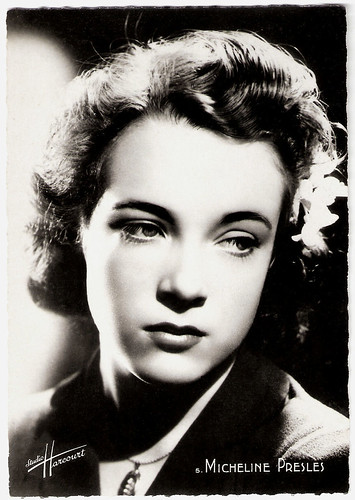
French postcard by SERP, Paris, no. 5. Photo: Studio Harcourt.
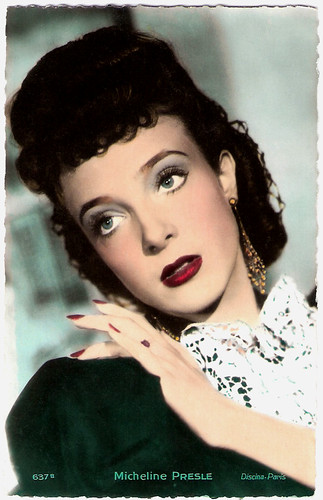
French postcard by Editions Chantal, Rueil, no. 637B. Photo: Discina, Paris.
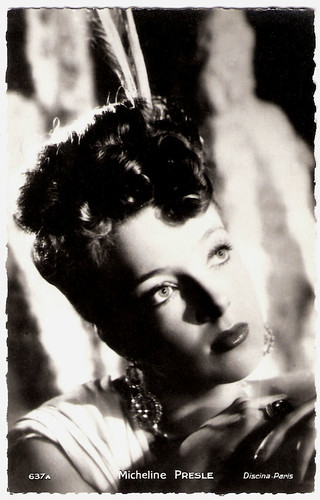
French postcard by Editions Chantal, Rueil, no. 637A. Photo: Discina, Paris.

French postcard by Collection Chantal, Paris. no. 637. Photo: Discina, Paris.
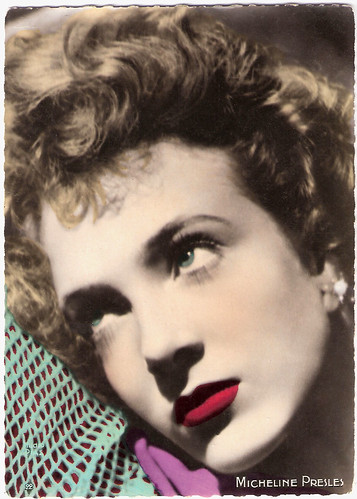
French postcard by Editions P.I., Paris. no. 22. Photo: Studio Piaz.
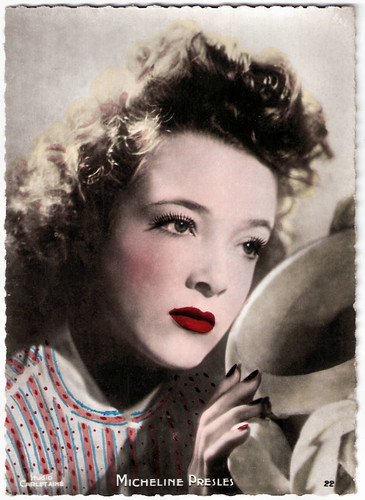
Blind date
Back in France, Micheline Presle played in many films, such as Si Versailles m'était conté/Royal Affairs in Versailles (Sacha Guitry, 1953), Napoléon (Sacha Guitry, 1955), La mariée est trop belle/Her Bridal Night (Pierre Gaspard-Huit, 1956) opposite young Brigitte Bardot, and Christine (Pierre Gaspard-Huit, 1958) with Alain Delon and Romy Schneider.
Presle also performed in Italy in Casa Ricordi/House Ricordi (Carmine Gallone, 1954), Beatrice Cenci/Castle of the Banned Lovers (Riccardo Freda, 1956) and she had a smaller part in Villa Borghese/It Happened in the Park (Gianni Franciolini, Vittorio de Sica, 1953).
In 1959 she played opposite Hardy Kruger in Blind Date (Joseph Losey, 1959) and in 1962 Presle returned to Hollywood to play in the Bobby Darin and Sandra Dee vehicle If a Man Answers (Henry Levin, 1962), and subsequently in The Prize (Mark Robson, 1963) with Paul Newman.
During the 1960s she played in such popular films as Philippe de Broca's Le roi de coeur/The King of Hearts (1965), but also in the art films L'Assassino/The Assassin (Elio Petri, 1961), La Religieuse/The Nun (Jacques Rivette, 1965), Peau d'ane/Monkey Skin (Jacques Demy, 1970), I Want to Go Home (Alain Resnais, 1989), and Mignon è partita/Mignon Has Come to Stay (Francesca Archibugi, 1989). From the early 1960s on, Presle also played in several French TV series, such as the long-running comedy Les saintes chéries (1965-1970). She has appeared frequently on the stage as well.
Presle was nominated for a César as the best supporting actress in I Want to Go Home (Alain Resnais, 1989). Since then, Presle performed regularly in film again. She was very visible in the films of her daughter, Tonie Marshall, such as in Pas très catholique/Something Fishy (Tonie Marshall, 1994) and France boutique (Tonie Marshall, 2003). In 2004, she received a special César for her entire oeuvre. At a very high age, Micheline Presle appeared in Thelma, Louise et Chantal (Benoît Pétré, 2010) starring Jane Birkin, and in the short family drama Je montrerai mes seins/I Show My Tits (Eduardo Sosa Soria, 2013). Her last cameo was in the film Tu veux... ou tu veux pas? (Tonie Marshall, 2014).Micheline Presle died of natural causes in 2024 in Nogent-sur-Marne (Val-de-Marne). She was 101. Her daughter Tonie Marshall passed away four years earlier.
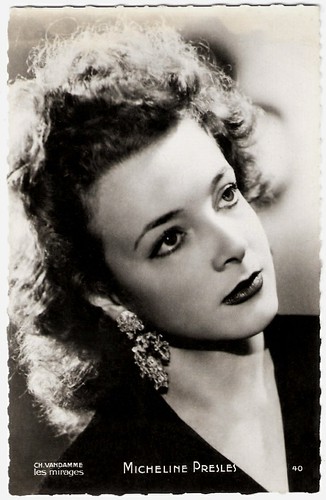
French postcard by Editions P.I., Paris. no. 40. Photo: Charles Vandamme, Les Mirages.

French postcard by Massilia. Photo: Studio Carlet Ainé.
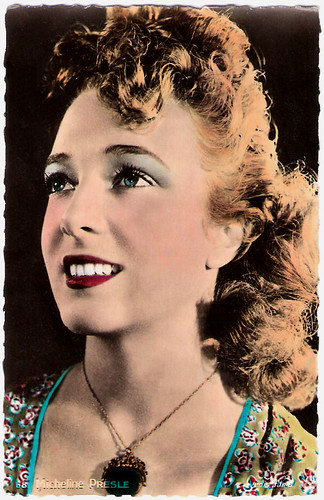
French postcard by Edit. Chantal, Rueil. no. 68. Photo: Védis Films.
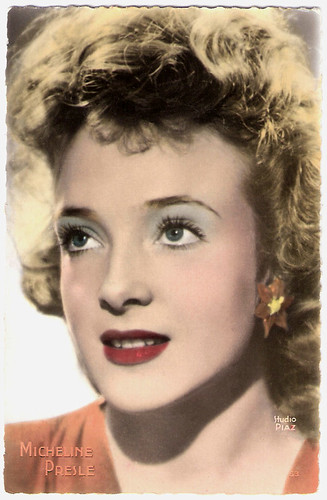
French postcard by Edit. O.P., Paris. no. 53. Photo: Studio Piaz.

French postcard by Editions O.P., Paris, no. 170. Photo: Teddy Piaz.
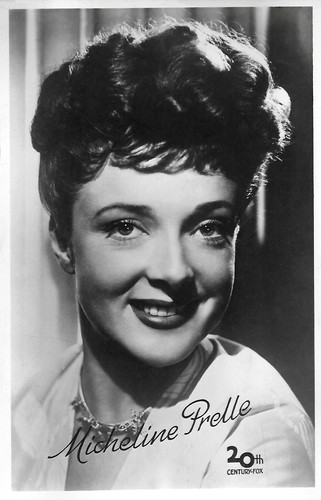
Dutch postcard, no. 3140. Photo: 20th Century Fox. Presle's stage name in Hollywood was Micheline Prelle.
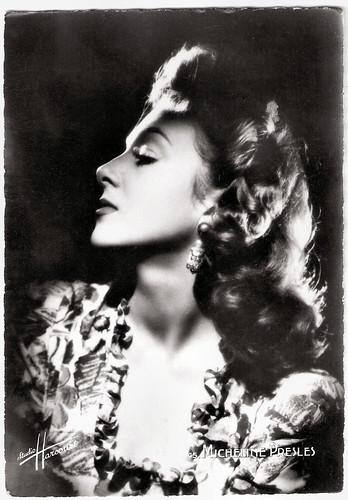
French postcard by Greff Editeur, Paris, no. 45. Photo: Studio Harcourt.
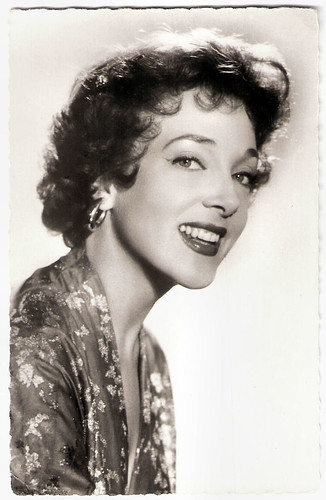
French postcard by Editions du Globe, Paris. no. 619. Photo: Sam Lévin, Paris.
Sources: Hans Beerekamp (Het Schimmenrijk - Ducth), Gary Brumburgh (IMDb), Allociné, Wikipedia, and IMDb.
13 comments:
the rome film festival has just started so i'm in the mood for a great cinema post. i just adore that first image - those perfect lips! happy PFF!
Interesting post as always! Our cinematic adventures are always afoot since we've had Netflix. We see movies and "meet" actors we would not otherwise get to know.
I competely love your blog!! is so interesting and well documented!! :D
That first shot, the red lips, purple, green eyes ... WOWOW! Wonderful post. Happy PFF!
Her lips don't lie, Shakira. Color me blind, though. There's life outside Sillywood.
Such pretty pretty people pictured on your posts! At first I thought one of the pictures was of Alice Faye - but of course it wasn't. Great blog! Carol
Thanks for sharing, and Happy Postcard friendship friday.
WIsh I understood French... why was she rowing the boat and he laying with his head in her lap!!!!! Seems it should be the other way... She was a Beauty!
Incredible that she's still working. good for her!
She was very beautiful and seems a very natural actor, no wonder she is still working. Interesting photo cards as well.
She was very beautiful and seems a very natural actor, no wonder she is still working. Interesting photo cards as well.
Nice post. Thanks for sharing!
THank you, for your nice comment.
Post a Comment